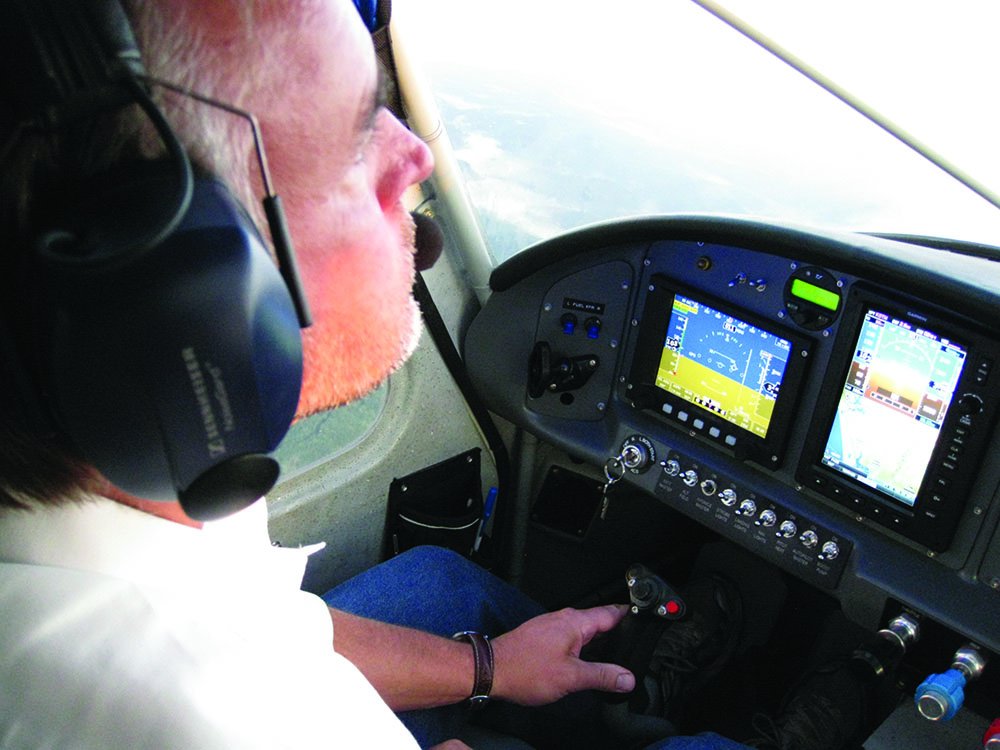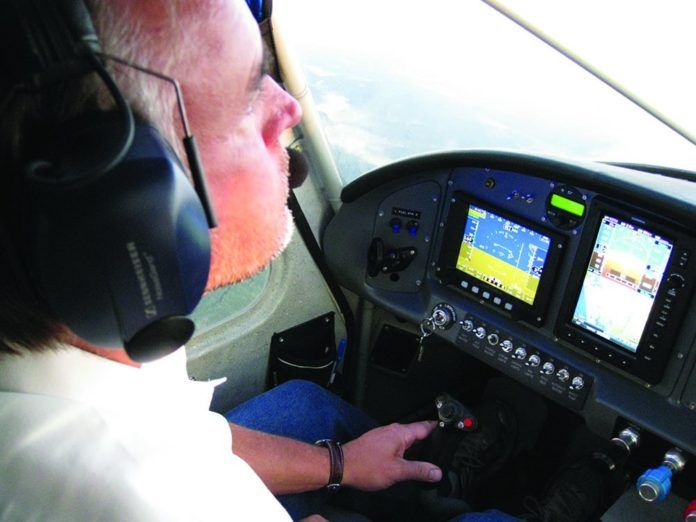Whenever two or more pilots get together in the same place, the conversation eventually gets around to which of them has the greatest number of flight hours. The yardstick of how much time you’ve spent aloft is more than just small-scale bragging rights, of course—it also can determine whether you’re eligible for a subsequent certificate, or even legal to carry passengers. And then there’s the matter of insurance coverage.
The simple fact is that most of the aviation world measures how competent we are in the cockpit by how much time we may have spent there. The inference is that high-time pilots are safer, and that low-time pilots are less safe. The fallacy is highlighted if we put someone with 20,000 hours as PIC of a 747 into a piston single and ask him or her to perform an engine-out approach from downwind: Without some practice—i.e., some experience with that particular operation—it’s not likely to turn out well. What is experience? How to measure it? Most important: If it’s so valuable, how can we get more of it?
What is experience?
Experience comes with many definitions. A classic example might be courtesy Merriam-Webster, who says experience is “practical knowledge, skill, or practice derived from direct observation of or participation in events or in a particular activity.” There’s no mention of total hours, time in type or ratings.
Another definition might come from the old saying, “Good judgment comes from experience and experience comes from bad judgment.” Judgment can be taught, of course, which is one of the fundamental principles behind the study of aeronautical decision making and emphasis on risk management techniques during training. But the implication here is that experience results from making mistakes. If making mistakes in the cockpit translated directly to experience, I’d be the most experienced pilot on the planet.
One way to look at the question is that the difference between the two explanations above involves understanding: We must understand why some maneuver or operation didn’t work out as planned so we can perform it better the next time. It’s logical then, that understanding what went well and what went poorly adds to our experience. Eventually, it is hoped, we’ll get good enough at whatever tasks we perform that we won’t make mistakes as often. In other words, we’ll have acquired enough experience to avoid making a smoking hole in the ground the next time we try that engine-out approach from the downwind.
Does It Matter?
Accident statistics tell us that experience matters. For example, a non-instrument-rated pilot is much less likely to survive an inadvertent encounter with IMC than, say, someone flying home from their instrument-rating checkride. And the FAA itself has enshrined the concept of experience into its regulations, by specifying minimum amounts of flight time before one is eligible for certain ratings and certificates.
Taken by themselves, the tables below —adapted from the AOPA Air Safety Institute’s 24th Joseph T. Nall Report—both justify and call into question the idea that experienced pilots are less likely to be involved in an accident. The tables show ATP certificate holders are less likely to be involved in accidents overall, or in accidents involving fuel management or weather, than commercial or private pilots. Yet that comfortable conclusion is turned on its head when the same tables demonstrate sport and student pilots are least likely of all to be involved in an accident. What’s going on with that?

For one thing, sport and student pilots are less likely to be flying in inclement weather in the first place. They also don’t require much fuel management because they don’t stray far from home. In both instances, greater supervision also can be a factor: students and sport pilots are more likely to be renting their airplane than to own it or be a member of a flying club. We’d also like to think they’re more likely to understand their limitations—i.e., lack of experience—than someone holding a private pilot certificate or better, but if there’s evidence of such, we’ve not seen it.
Missing from this data is any way to measure accident rates for various certificate holders: How often do these pilots fly and what is their exposure? But the data summarized in the tables reinforce the idea that a pilot with relatively more experience of the kind meeting the Merriam-Webster definition will be involved in fewer accidents overall. He or she also will be less likely to be in an accident involving fuel mismanagement or weather.
Why It Matters
By now, it should be obvious that, when it comes to managing aviation’s risks, more experience usually is better than less. The major exception is when we do something for the first time, or when we do it despite our judgment telling us it’s too risky. Aviation safety professionals have been wrestling with how to fix that conundrum since the Wright Brothers, and we won’t resolve it in this article.
When we do something for the first time—a for-real short-field takeoff, or an ILS to minimums without an instructor beside us—the little voice in our head should say something like, “I’ve never done this before; what can go wrong?” If another voice answers, saying, “Nothing; it’ll be fine,” we may be setting ourselves up for a problem. That’s when the “good judgment from experience and experience from bad judgment” definition comes into play.
It may sound like general aviation boosterism to say this, but the fact is if we want to gain enough experience to fly with minimal risk, we need to do it more. We also need to do things in an airplane we’ve never done before, preferably with an instructor or someone who has. Along the way, there will be obstacles and mistakes. Find some other suggestions to your right on meeting the challenges of gaining experience while doing it safely.
Ultimately, it’s up to us to determine if we have enough experience to accurately assess and understand current and forecast weather conditions, or to manage fuel, activities the AOPA ASI highlights as accident-prone. While understanding the risks is a must, the first time we perform a certain operation, its outcome may be far from clear. Stepping out of a comfort zone is fine, as long as you easily can get back in.
And remember: There’s always someone out there with more hours, more ratings and more stories. Big deal. One of the keys to low-risk flying is refusing to let someone get you into something you know is over your head.
| Non-Commerical Fixed-Wing Accidents | |||
|---|---|---|---|
| Certificate Level | Accidents | Fatalities | Lethality |
| ATP | 176 / 15% | 29 / 13.2% | 16.5% |
| Commercial | 346 / 29.5% | 61 / 27.7% | 17.6% |
| Private | 531 / 45.3% | 115 / 52.3% | 21.7% |
| Sport | 21 / 1.8% | 5 / 2.3% | 23.8% |
| Student | 77 / 6.6% | 5 / 2.3% | 6.5% |
| Other | 20 / 1.7% | 5 / 2.3% | 25% |
| Second Pilot on board | 174 / 14.9% | 35 / 15.9% | 20.1% |
| CFI on board* | 301 / 25.7% | 42 / 19.1% | 14% |
| IFR Pilot on board* | 681 / 58.2% | 127 / 57.7% | 18.6% |
| *includes Single-Pilot Accidents | |||
| Fuel Management Accidents: Non-Commercial Fixed-Wing | |||
|---|---|---|---|
| Certificate Level | Accidents | Fatalities | Lethality |
| ATP | 16 / 20.3% | 2 / 20% | 12.5% |
| Commercial | 22 / 27.8% | 1 / 10% | 4.5% |
| Private | 37 / 46.8% | 5 / 50% | 13.5% |
| Sport | 1 / 1.3% | 1 / 10% | 100% |
| Student | 2 / 2.5% | 0 | – |
| Other | 1 / 1.3% | 1 / 10% | 100% |
| Second Pilot on board | 6 / 7.6% | 0 | – |
| CFI on board* | 20 / 25.3% | 1 / 10% | 5% |
| IFR Pilot on board* | 51 / 64.6% | 6 / 60% | 11.8% |
| *includes Single-pilot Accidents | |||
| Weather Accidents: Non-Commercial Fixed-Wing | |||
|---|---|---|---|
| Certificate Level | Accidents | Fatalities | Lethality |
| ATP | 3 / 6% | 1 / 2.6% | 33.3% |
| Commercial | 12 / 24% | 7 / 18.4% | 58.3% |
| Private | 33 / 66% | 28 / 73.7% | 84.8% |
| Sport | 2 / 4% | 2 / 5.3 | 100% |
| Second Pilot on board | 4 / 8% | 3 / 7.9% | 75% |
| CFI on board* | 6 / 12% | 3 / 7.9% | 50% |
| IFR Pilot on board* | 27 / 54% | 17 / 44.7% | 63% |
| *includes Single-pilot Accidents | |||




